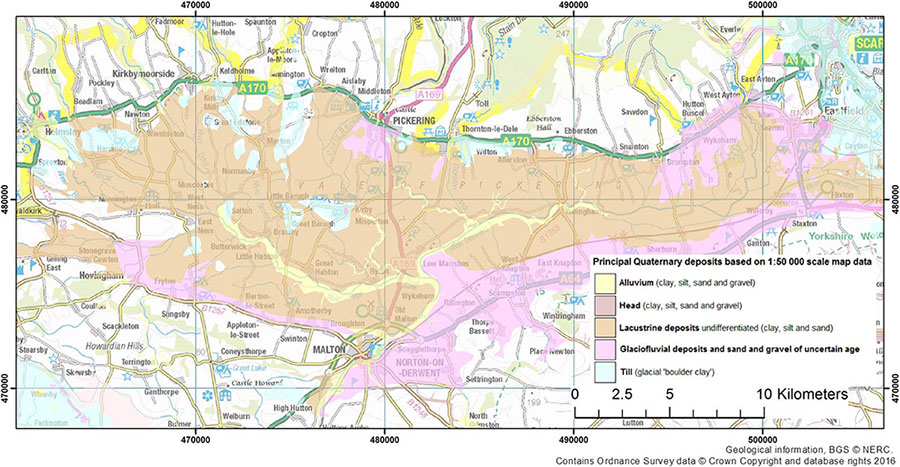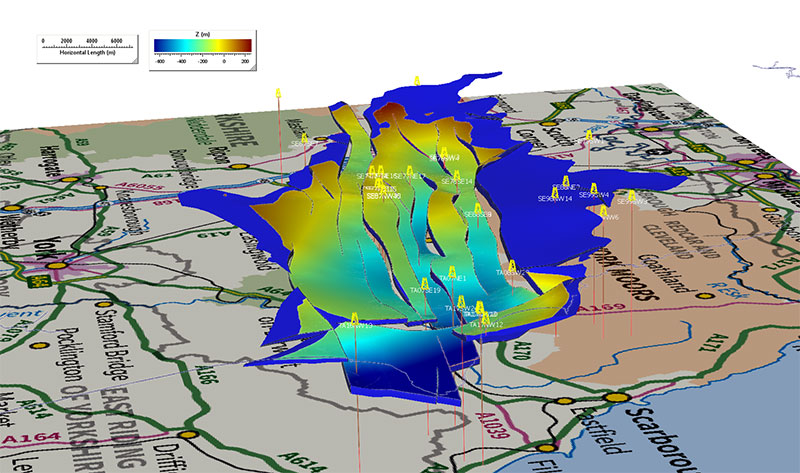Groundwater–bearing rocks
Two main aquifers exist within the Vale of Pickering. The first is a shallow, superficial aquifer consisting of Quaternary glacial and lake deposits in the lowland central part of the vale. These sediments consist of local sand and gravel horizons within deposits of mainly clay and silt, which reach thicknesses of up to around 40 m in parts of the vale (Figure 1).
The shallow sediments are designated by the Environment Agency (EA) as a Secondary B aquifer. The Quaternary deposits are underlain by often weathered clay and occasional sandy horizons of Jurassic age (Kimmeridge Clay). The superficial aquifer is used for small-scale, private water supply.
The older, Jurassic Corallian Limestone aquifer crops out on the southern, western and northern margins of the vale and at depth below the Quaternary and Jurassic deposits (of the order of 200 m below ground level in the Kirby Misperton area).
The Corallian Limestone forms a Principal aquifer and is used for both public and private supply in the outcropping areas on the margins of the vale. In the central part, groundwater from the Corallian Limestone is not used due to its depth and increased salinity. Geological modelling shows the prevalence of faulting, mostly with an east–west orientation, in the central part of the vale (Figure 2).
The Chalk forms a further Principal aquifer beyond the vale in the south east.
Contact
Contact BGS enquiries for further information.
- May 2016: Hydraulic fracturing in North Yorkshire
- Aquifers and shales
- Environmental baseline monitoring in the Vale of Pickering | Science briefing 415 KB pdf
- National methane baseline survey
- Other BGS shale gas research
- Shale gas: BGS research | science briefing 1 MB pdf
- Shale gas and groundwater FAQs








